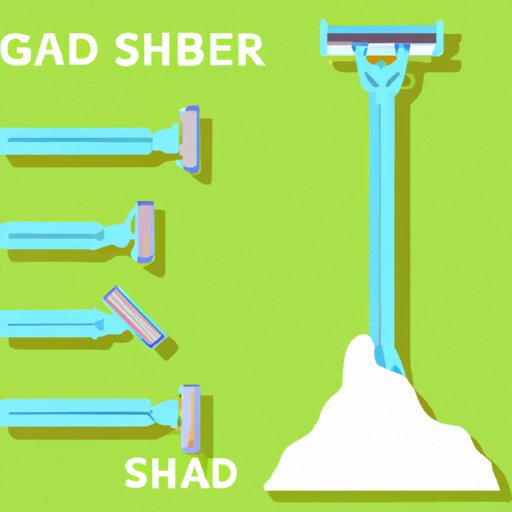Introduction
Razor burn is a common skin condition that occurs after shaving. It can cause redness, itching, burning, or even bumps. While it’s not dangerous, it can be uncomfortable and unsightly. Fortunately, there are several steps you can take to help prevent razor burn and enjoy a smoother, more comfortable shave.

Use a Sharp Razor Blade
Using a sharp razor blade is one of the most important steps in avoiding razor burn. A dull blade can tug at your skin and lead to irritation and discomfort. To determine if your razor blade is dull, inspect it closely. If the blade appears worn or nicked, it’s time to replace it.
When replacing your blade, consider investing in a quality razor. High-quality razors often have multiple blades that can provide a closer shave with less irritation. Additionally, look for razors with lubricating strips and handles that are easy to grip.

Wash the Area Before and After Shaving
It’s important to wash the area before and after shaving to remove dirt and oils that can clog pores and lead to razor burn. Use a mild cleanser to gently cleanse the skin. Avoid using bar soap as it can dry out the skin and make it more prone to irritation.
Once you’ve finished shaving, rinse off any remaining shave cream or gel with lukewarm water. Pat the area dry with a clean towel and apply a moisturizer or aftershave to help soothe the skin.

Moisturize Skin Before and After Shaving
Dry skin is more susceptible to razor burn, so it’s important to keep the skin hydrated. Apply a light moisturizer to the area before shaving to help reduce friction and protect the skin from razor burn. After shaving, use a moisturizing aftershave or lotion to rehydrate the skin.
Look for products that contain hydrating ingredients such as aloe vera, glycerin, or vitamin E. These ingredients can help soothe the skin and keep it soft and supple.
Shave in the Direction of Hair Growth
Shaving against the grain can irritate the skin and lead to razor burn. To help prevent this, it’s best to shave in the direction of hair growth. To determine the direction of hair growth, run your fingers over the area. The direction that feels the smoothest is usually the direction of hair growth.
When shaving, use short strokes and avoid pressing too hard on the skin. This will help reduce friction and minimize the chance of razor burn.
Use a Lubricating Shave Cream or Gel
Using a lubricating shave cream or gel can also help reduce friction and protect the skin from razor burn. Look for products that contain lubricants such as glycerin or silicone. These ingredients can help soften the hair and reduce drag on the skin.
Be sure to apply a generous amount of shave cream or gel to the area. This will help provide a protective barrier between the razor and the skin.
Rinse Blade Often While Shaving
During shaving, it’s important to rinse off the razor blade to remove any hair, shave cream, or debris. This will help keep the blade from becoming clogged and reduce the chance of razor burn.
To properly rinse the blade, hold it under running water for a few seconds. This will help remove any buildup and ensure that the blade is free of any debris.
Conclusion
Razor burn can be uncomfortable and unsightly. To help avoid razor burn, use a sharp razor blade, wash the area before and after shaving, moisturize skin before and after shaving, shave in the direction of hair growth, use a lubricating shave cream or gel, and rinse the blade often while shaving.
By following these simple tips, you can help keep your skin healthy and smooth and avoid the discomfort of razor burn.


